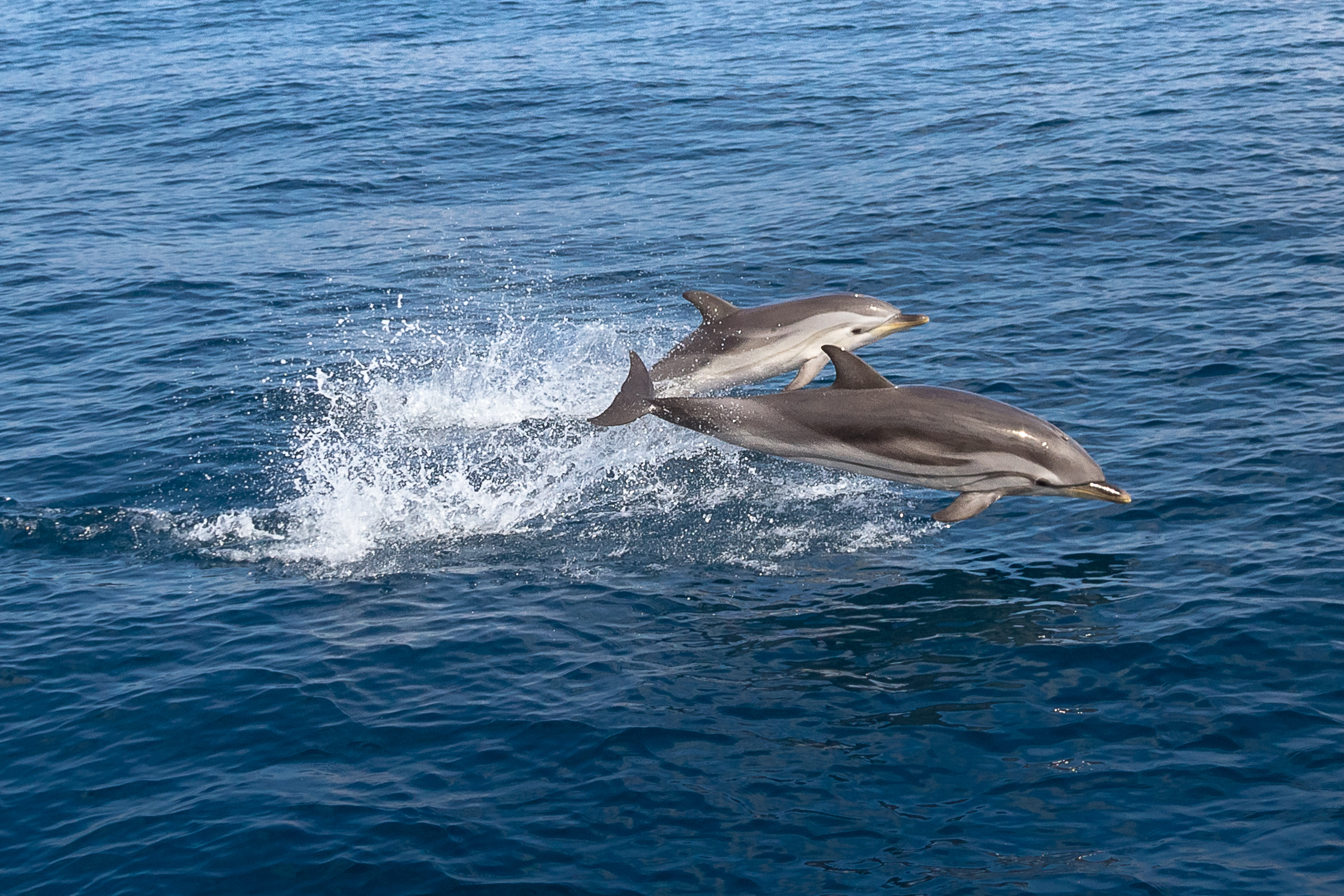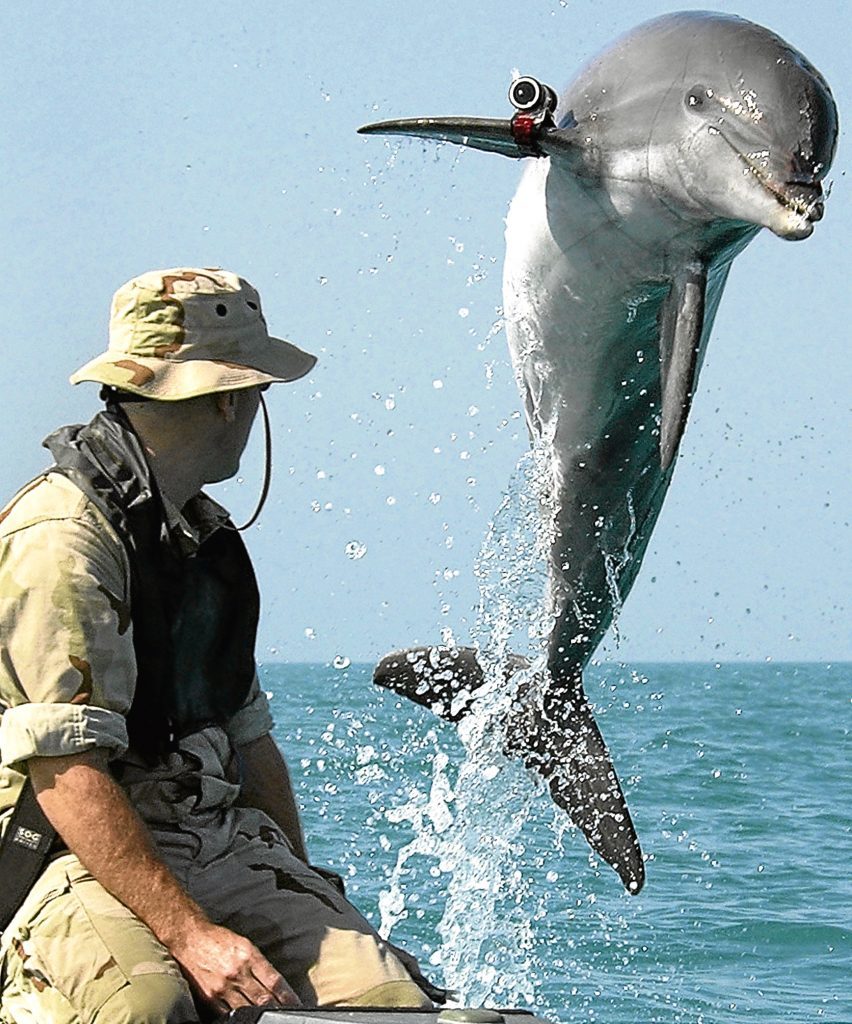
WE all admire dolphins for their grace, cuteness and intelligence — but few realise they could win wars, too.
These clever dolphins, long loved for their willingness to bond with humans, really show what they are capable of when they join the Navy.
The US Navy, and those of other nations such as Russia and Iran, use highly-trained dolphins for all kinds of military operations, and they can be the difference between victory or defeat, life or death.
Oceanic military dolphins have been trained to locate and rescue missing naval swimmers and find and help clear underwater mines.
The US Navy trains both dolphins and sealions as part of the US Navy Marine Mammal Program, based in San Diego, California.
Some dolphins they use come from the Gulf of Mexico, which seems to produce the most intelligent dolphins out there.
The wonderful creatures were first used by the US Navy during the first two Gulf Wars, with about 75 dolphins taking part.
At Kazachya Bukhta, close to Sevastopol, Crimea — once Ukrainian but now taken over by Russia — the Soviet Navy spent a lot of time and money exploring how marine mammals could be used for military purposes.
Although the Russian military is thought to have closed its marine mammal programme in the early 1990s, many believe they are once more part of their work.
That seemed to be proved when, in the year 2000, the Russian Navy had sold dolphins trained to kill to the Iranian military.
Dolphins trained to kill! Like something out of James Bond, and what a terrifying thought.
It goes without saying that there is real secrecy around it all, though there have regularly been rumours that superpower navies have also trained dolphins to lay underwater mines as well as find them.
They have also been trained, it is thought, to locate enemy swimmers and their submarines in so-called kamikaze operations, in which the dolphin or sealion is fitted with explosives and then crashes into the submarine.
Rumours have also surfaced, pardon the pun, about dolphins using poison darts, sonar jamming devices and other grim practices.
The US Navy has always denied they’d train dolphins to do such things, although there seemed to be an awful lot of panic when stories emerged that US military dolphins had escaped from Lake Pontchartrain during the floods that followed Hurricane Katrina.
A gang of lethal killer dolphins on the loose wouldn’t be the kind of story they’d want out there, after all, causing panic among the public.
What we do know is that in 1960, the US Navy began a programme to work with such sea creatures on defence and mine detection and to help them design new submarines and underwater weapons.
According to one source, at least 19 species were tested, including sharks and birds.
Eventually, they settled on the bottlenose dolphin and California sealion, which proved themselves most adept at such work.
In one year alone, they spent $14 million on marine mammal weapon research and training.
It’s said dolphins have saved more lives in open water than trained human lifesavers, and much of their training comes via human hand signals.
No prizes for guessing lots of lovely fish is their reward — a small price to pay if our clever underwater friends keep us all safe from harm.

Enjoy the convenience of having The Sunday Post delivered as a digital ePaper straight to your smartphone, tablet or computer.
Subscribe for only £5.49 a month and enjoy all the benefits of the printed paper as a digital replica.
Subscribe